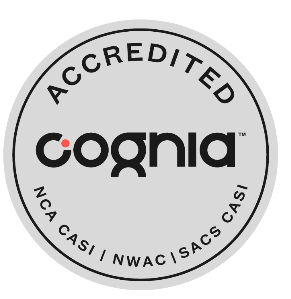The pencil was invented in 1795. The first documented use of the chalkboard in the United States was in 1801, and the ballpoint pen came into popular use in the 1940s.
We’ve been using these tools in education for decades, and now we’re sprinting into a new era with new tools.
How are Canyons District schools using such modern tools as Chromebooks and artificial intelligence? In what ways do these tools enhance learning, and what are schools doing to help students use them responsibly? Connect Canyons posed these questions to the District’s Digital Teaching and Learning Specialists Katie Gebhardt and Dr. Camille Cole.
After the pandemic, some may assume Chromebooks and other devices are the center of learning. Others have suggested AI will one day replace teachers altogether. But the truth, says Cole, is that technology is being put to use carefully and strategically.
“An easy misconception is that kids are on their Chromebooks from start to finish of the school day, and it’s really not like that,” says Cole. “Any time a student is using the technology, it should be high quality learning opportunities — whether it’s active where they’re physically working, or passive learning, where they’re reading or just consuming information.”
Technology can give teachers immediate feedback on which concepts individual students are struggling to master. AI can make learning more accessible to students with disabilities.
The litmus test in determining when and how to use a given technology is whether it advances learning, Cole says.
Conversely, teachers are teaching students to use technology, not as consumers, but as creators. “Digital citizenship is really just using technology and our resources that we have today for good,” Gebhardt says.
Canyons District breaks up digital citizenship into five competency areas — Inclusive, informed, engaged, balanced, and alert. Students learn to check sources, use their technology to solve problems, balance their time on and offline, and make sure they are keeping safety in mind.
Episode Chapters
1:06 Understanding Digital Citizenship
Our experts explain what digital citizenship means and how teachers work practicing good digital citizenship into their lessons.
5:52 Technology Integration in the Classroom
We learn how teachers and students alike are using technology as a tool to enhance the learning experience.
9:53 Screen Time Quality vs. Quantity
Our experts share just how much time students are using devices and how those technological tools are being used.
17:21 Advice for Families at Home
We discuss how families can practice good digital citizenship at home and set examples for their children.





